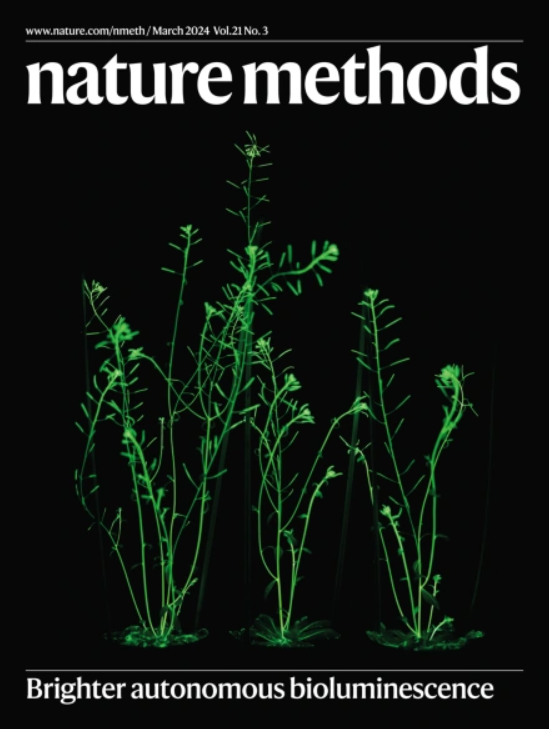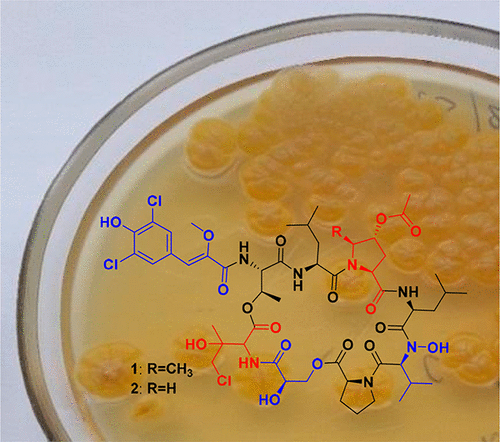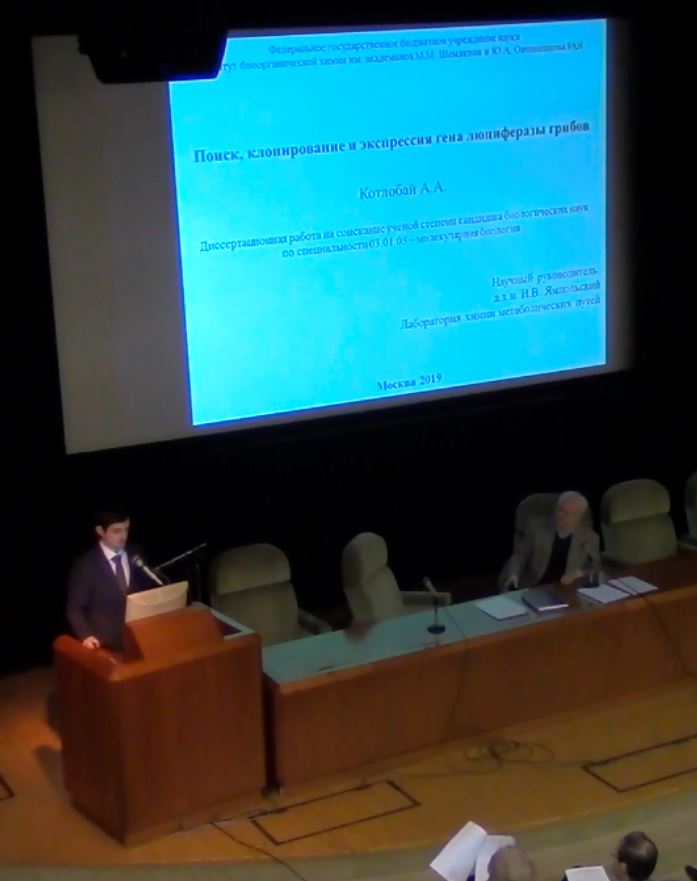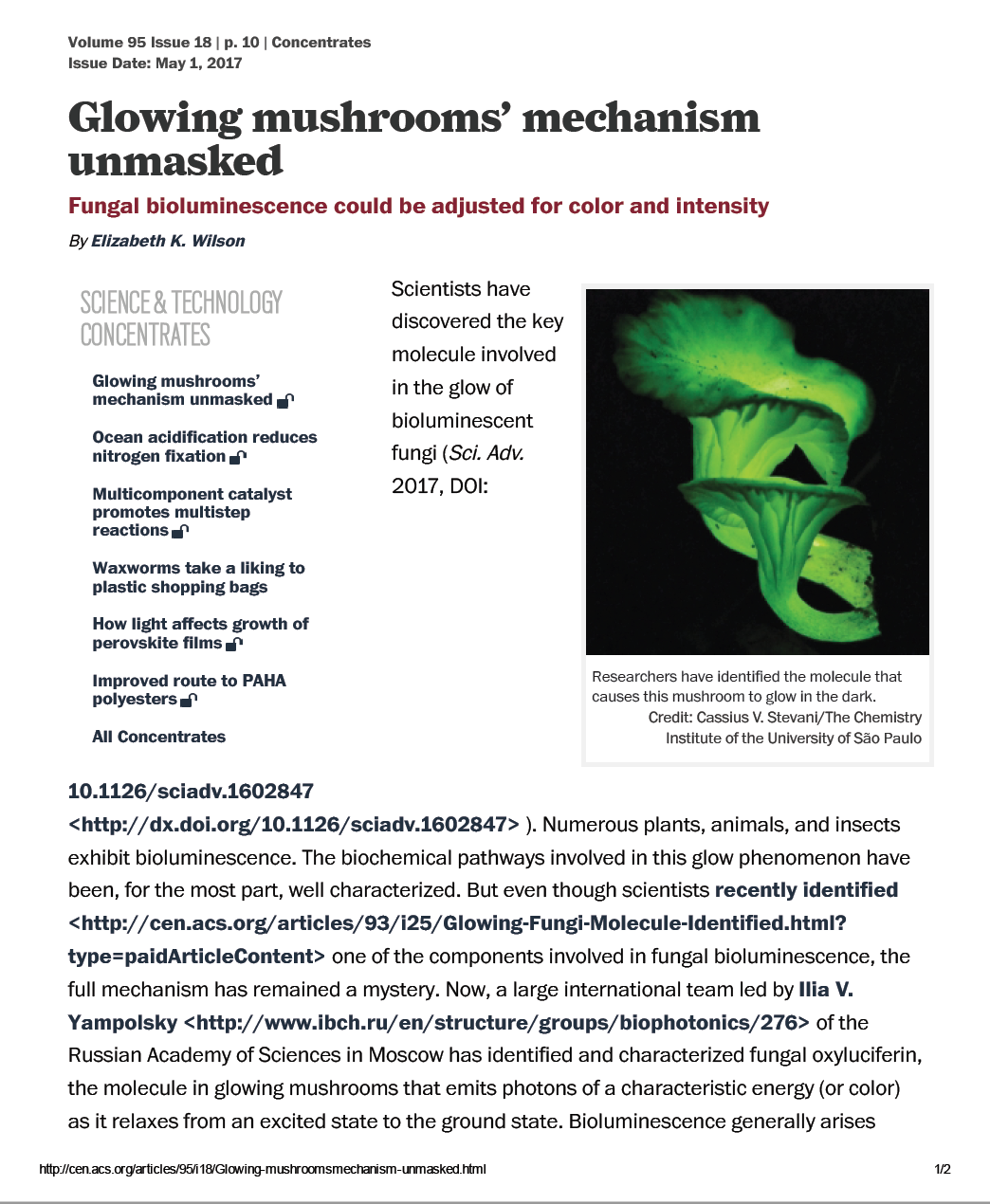We are pround to announce Ilia Yampolsky as invited speaker at Resonance Bio International Symposium, which will take place at Tokyo University of Science on October 30-November 1, 2019. Program could be downloaded here.
Detlef Schröder medal 2019
Ilia Yampolsky was awarded Detlef Schröder medal by the Institute of Organic Chemistry and Biochemistry of the CAS (Pregue, Chezh Republic). The seminar “New bioluminescence systems: luciferins, luciferases and luciferin biosynthesis pathways” took place at September 10th, 2019 in the IOCB Lecture Hall. Congratulations, Ilia!
Paper about Odontosyllis luciferin in PNAS
This was a tough one to crack! Only 3 signals in proton NMR spectrum, and, thanks to X-ray, we could see more. But now we finally know how exactly these polychaeta worms glow to mate each other. Check out our new paper about Odontosyllis luciferin on PNAS website.
Figure from PNAS website. O. undecimdonta worms and components of its bioluminescence system. (A) The fireworm in daylight and in the dark. (B) Light emission of lyophilized worms in water. (C) NMR tube with the purified oxyluciferin (Green), visible light. (D) Fluorescence of Green, UV light. (E) NMR tube with the purified product of nonenzymatic oxidation of luciferin (Pink), visible light.
Third edition of Shimomura's "Bioluminescence" is now available
We are proud to announce that the third edition of Osamu Shimomura’s “Bioluminescence. Chemical Principles and Methods” is now available for purchase. Congratulations to our staff and colleagues, who participated in the preparation of this edition of the book.
Our research featured in BEST of 2018 by Russian Science Foundation
Russian Science Foundation rscf.ru published the main results of 2018. The project of our laboratory “Development of the the first genetically encoded autonomously bioluminescent system of eukaryotes”, which is supported by RScF grant, was named among ten most important results of the year.
More information here (in russian).
Congratulations to Alexey Kotlobay!
Congratulations to our colleague Alexey Kotlobay for the succesful PhD thesis defence, which took place on Wednesday 20th 2019! Good luck with your further research in the field of bioluminescence!
IUPAC Global breakfast
This Tuesday, Feb 12th, our colleague Zinaida Kaskova took part in IUPAC Global Women’s breakfast, which aimed to assist women in science to raise the discussion about their career progress and develop new contacts in the network. The event was timed to the International Day of Women in Science. More information here.
#GlobalBreakfast #IUPAC100 #WomenInScience
Our paper about fungal bioluminescent system is out!
After more than five years of a very collaborative research, we are glad to announce the main components of fungal bioluminescent system.
Many thanks to everyone who contributed to this study. This is definitely one of our most interesting projects so far – and it’s not over! 😉
Check out our paper on PNAS website
© Sergey Shakhov
Le Monde paper about our research
Our research was highlighted in LeMonde newspaper
C&EN highlighted our discovery of Mechanism of Fungal Glowing
C&EN highlighted our discovery of Mechanism of Fungal Glowing














